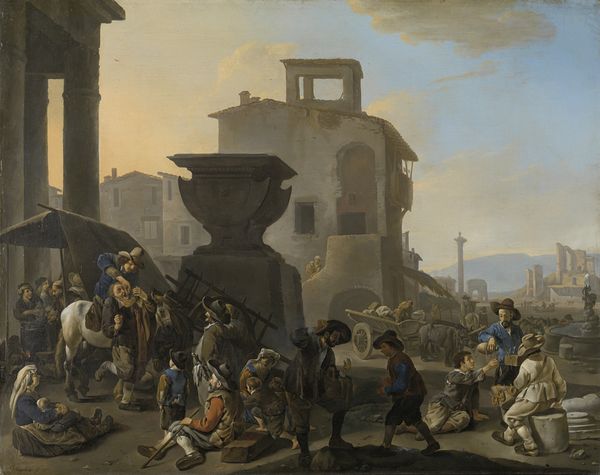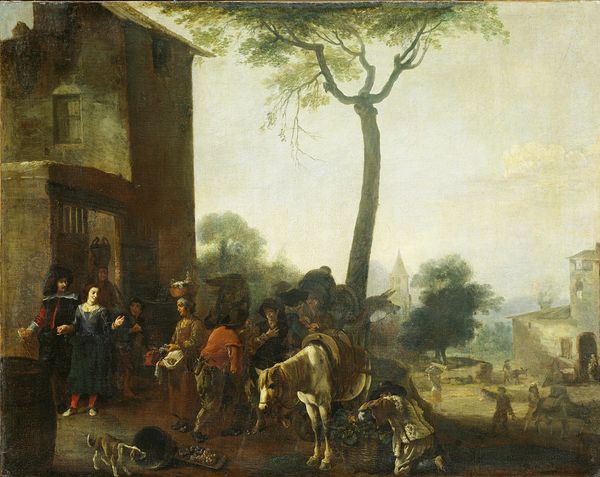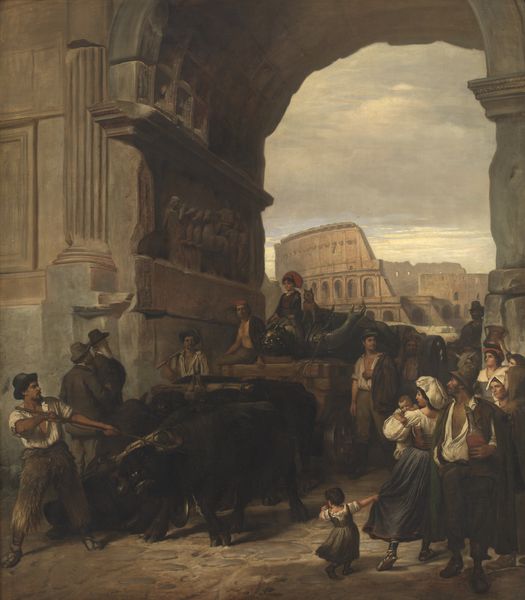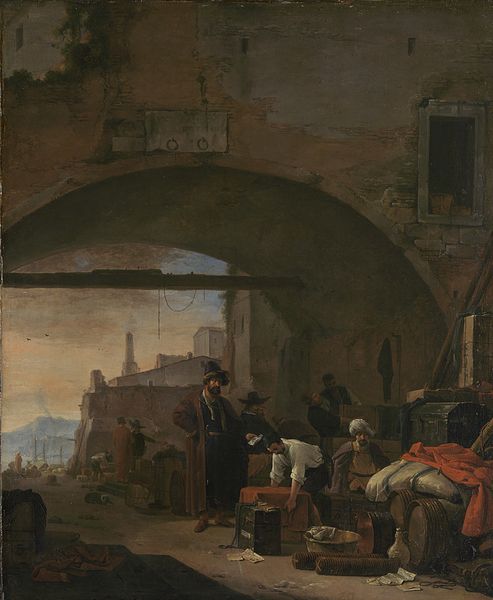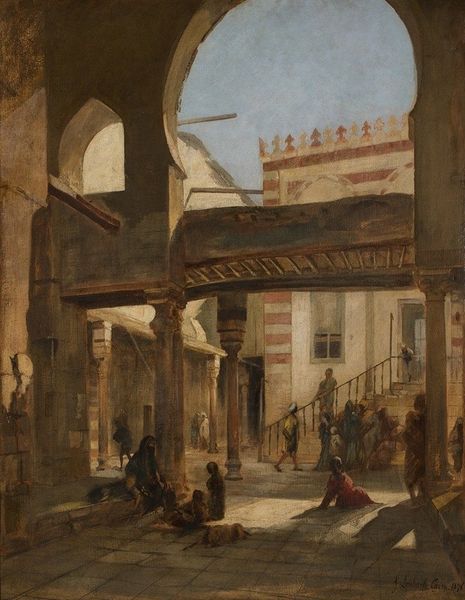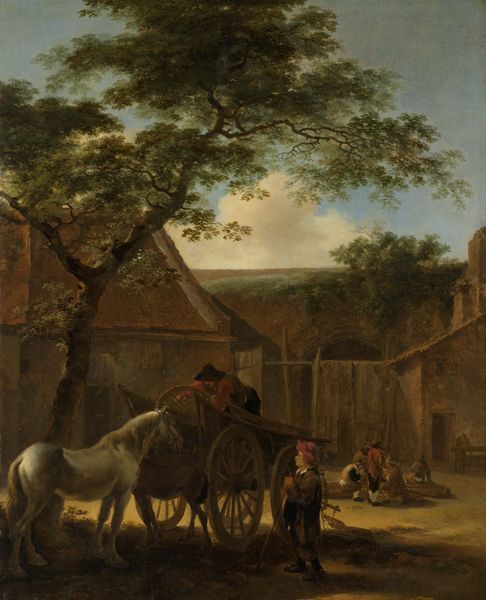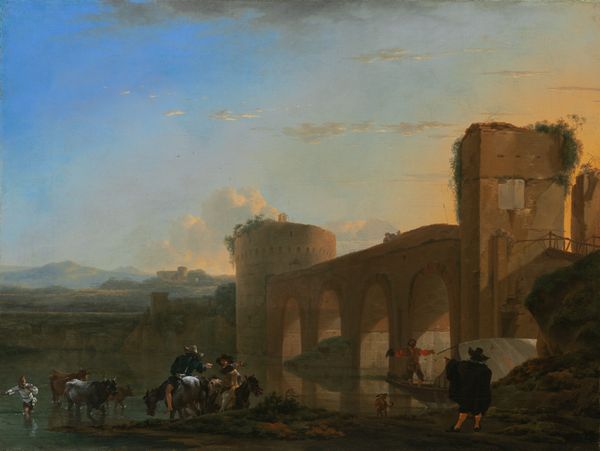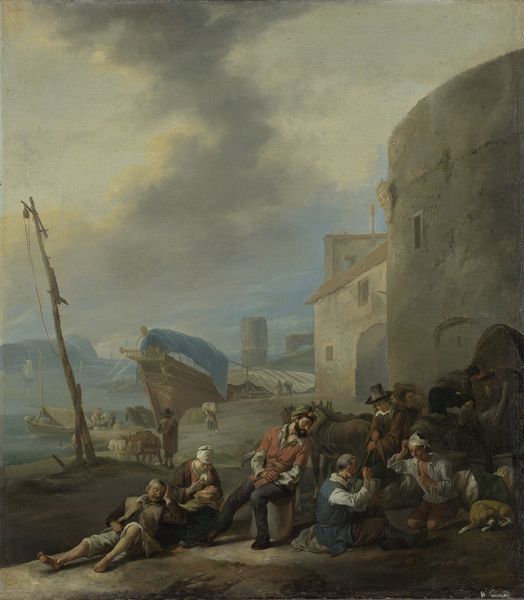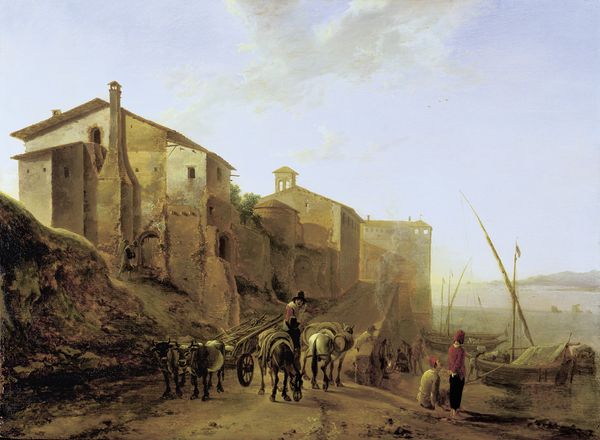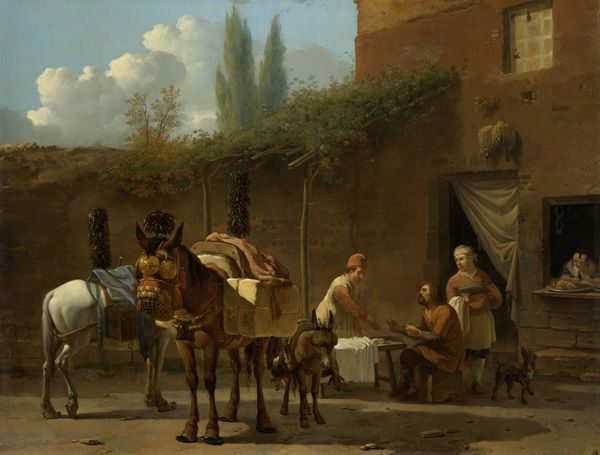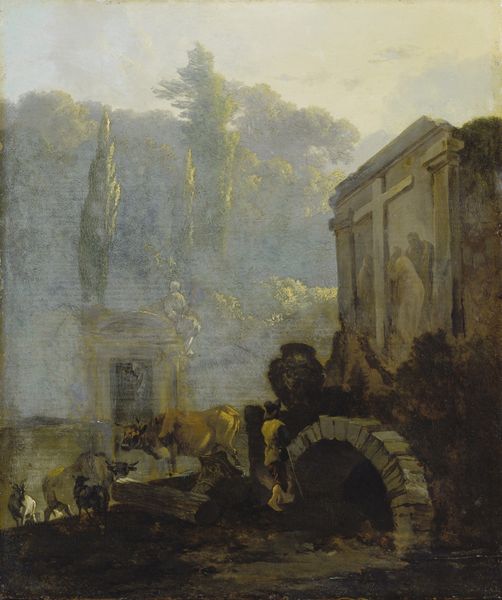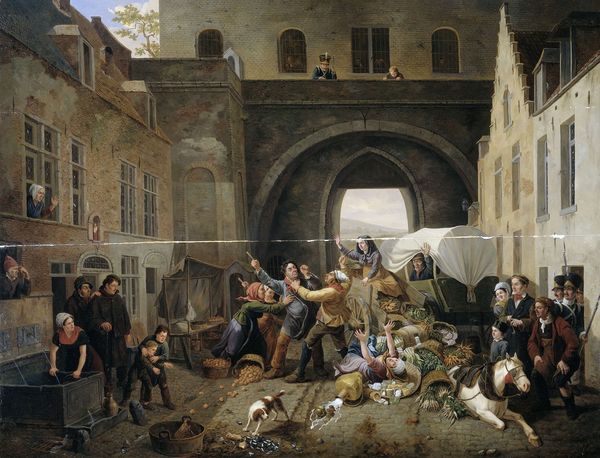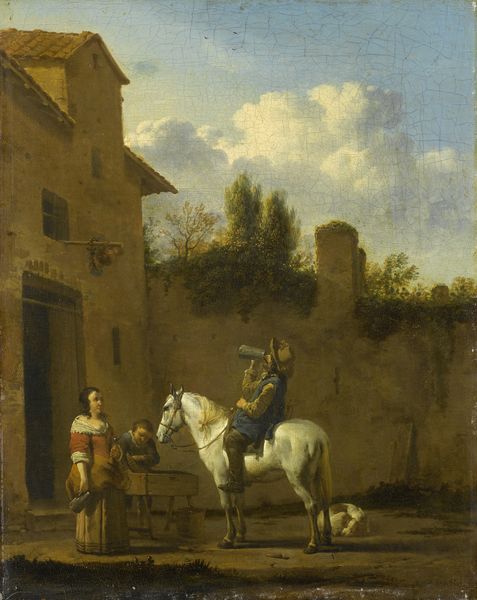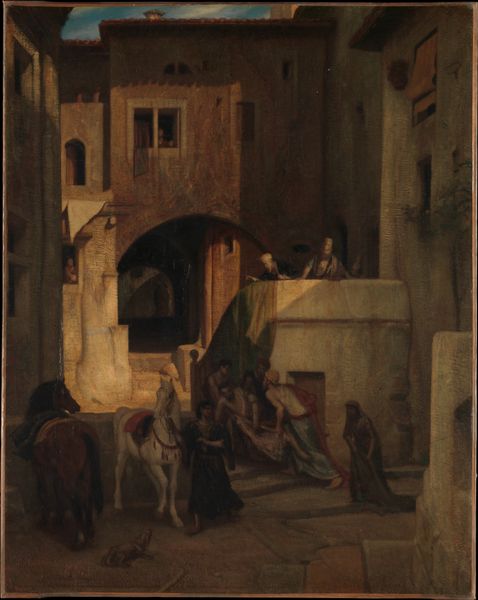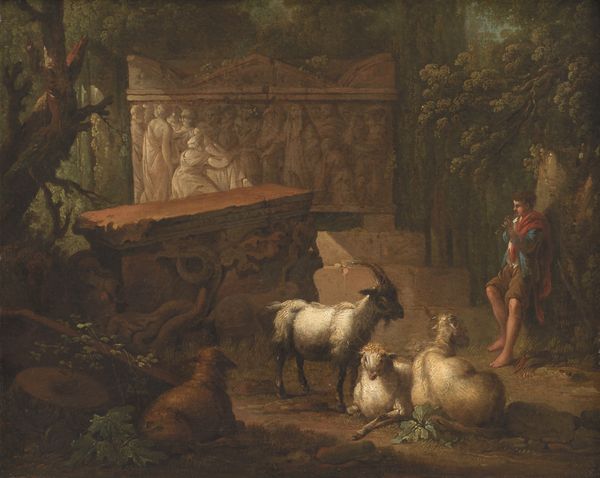
Simo and his former slave Sosia. From Terence´s Andria. 1803
0:00
0:00
painting, oil-paint, canvas
#
neoclacissism
#
painting
#
oil-paint
#
canvas
#
cityscape
#
genre-painting
#
history-painting
Dimensions: 157.5 cm (height) x 142 cm (width) (Netto), 169.8 cm (height) x 154.4 cm (width) x 7.6 cm (depth) (Brutto)
Curator: Ah, Nicolai Abildgaard's painting from 1803, titled "Simo and his former slave Sosia. From Terence's Andria." Here displayed on canvas in oil. What strikes you immediately about its formal qualities? Editor: The pervasive stillness. Despite the figures populating the composition, a sense of quietude dominates. The restricted palette and subtle gradations in light seem to generate that stillness, as does the linear perspective toward that pale, distant facade. Curator: Indeed. Note the balanced arrangement and how Abildgaard uses precise lines and calculated proportions reflective of Neoclassical ideals. He really has mastered creating a historical scene. Look at the architectural structures. These evoke ancient Rome. Editor: But that architectural grandeur becomes somewhat undermined by what I see as its historical framing, doesn’t it? To portray the relationship between a former slave and his master seems problematic now, given the focus of history painting towards these socio-political subjects in this period. Curator: Yes. Yet the figures serve primarily as elements within this stage. Their arrangement dictates your reading as well: see the man on the right who, presumably is still a slave carrying an overloaded container. In juxtaposition to the men at the foreground it creates a sense of movement across class lines. Editor: And there is, arguably, this rather detached rendering to note too. I mean look at this cold tone and smooth brushwork, how he constructs figures as generalized types. One is distanced from emotionality, but is that on purpose given the social themes present. It seems an emotional neutrality—an exercise in rendering moral reflection. Curator: Precisely. Consider too how museums today grapple with the display of such images, prompting vital conversations about power, representation, and how we interpret historical narratives through art. It asks us how these objects function within contemporary discourse. Editor: Yes, by contemplating on Abildgaard's choice of composition, that almost icy finish, one really feels invited to confront not only an artistic interpretation, but also its reverberations on social commentary even now. Curator: I concur. A canvas of skillful neoclassicism meeting complex historical context; its continued viewing elicits a discussion about historical presentation itself.
Comments
statensmuseumforkunst almost 2 years ago
⋮
After a broken and unhappy marriage, Abildgaard met his second wife Juliane Marie some time before 1800. This new, reinvigorating relationship introduced new themes in his art, leading him to address aspects of love.Scenes from Terence's romantic comedyDuring the time after 1800 he created four large canvases to be placed in the residence provided for the couple at the Royal Academy of Fine Arts at Charlottenborg, filling them with scenes from the ancient writer Terence’s romantic comedy Andria.Connection between Terence and AbildgaardIn the painter’s version of the complicated dramatic intrigues, they begin when the central character, Simo, asks his black chef Sosia to pretend that he is hastening the marriage of Simo’s son.The scene in the foreground links Terence and Abildgaard through a sequence of allusions: Terence was a slave who had been given his freedom, and in the picture Abildgaard based the black chef’s appearance on a medal that he himself designed on the occasion of the Danish ban on slavery.In the play the chef is in fact also a liberated slave, and the playwright was from Africa himself. In the last picture in the series, Abildgaard makes an appearance accompanied by his wife and child - providing a kind of counter-signature to balance out the first picture’s introduction of the playwright.
Join the conversation
Join millions of artists and users on Artera today and experience the ultimate creative platform.
statensmuseumforkunst almost 2 years ago
⋮
Dedicated to his wife, Abildgaard painted four scenes from THE ANDRIA, a story of two young lovers who must brave many challenges before winning each other – just like the artist and his wife, Juliane Marie. The young man’s father is preparing a wedding between his son and his friend’s daughter (1st left), but the son loves the girl from Andros. The son’s slave (masked) wishes to help his master (no. 2) but not even the cries of the girl from Andros’ newborn child compels the father (no. 3). Eventually, the slave and the girl’s maid try to dissuade the father’s friend by means of the baby (no. 4). As it turns out, the girl from Andros is the father’s friend’s long-lost daughter! So the relationship is universally accepted. The happy end is not shown, but hinted at by the family in the doorway: Abildgaard, his wife, and their newborn baby.
